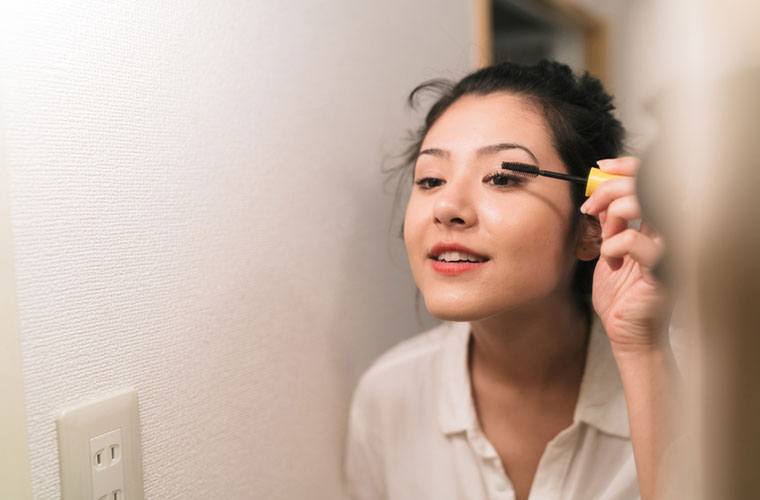In the summer months, itchy eyes are just about as common as rooftop happy hours and razor burn. Usually, you can chalk them up to seasonal allergies or the fact that you forgot to take out your contacts before bed. But there's another possible cause that's a little, well, freakier: Your eyes might be irritated because there are teeny, tiny mites, called Demodex, living on your eyelids.
Don’t panic.
Before you start imagining bugs crawling out of your eyeballs horror movie-style, it’s important to note that Demodex aren't as terrifying as they sound. But don't take my word for it: Medical experts—and someone who's dealt with them firsthand—give the lowdown on these critters that could be living in your lash line.
Keep reading to learn more about these scary-sounding mites (and how to avoid them).

What, exactly, are Demodex?
These nearly microscopic creepy crawlies are parasites that live in your hair follicles and feed on your skin cells and the oils secreted by your sebaceous glands. This means they can exist on any part of your body where there's hair (from head to toe), but they often set up camp on your face because your T-zone gives them plenty to snack on. (Apologies if I just made you lose your appetite.)
There's no denying the mites' ick factor, but under regular circumstances, they're generally NBD. “Most people live with Demodex day in and day out and it's no big whoop,” says Katherine Mastrota, OD, an optometrist in New York City. "It really doesn't impact their lives."

{{post.sponsorText}}
Things become problematic, though, when there's an overpopulation of the mites, particularly around your eyelids. "Demodex tend to be opportunistic, so we find more in people with systems that are out of balance,” says Mastrota. This imbalance could be caused by sickness, a compromised immune system, or, possibly, poor lid hygiene. (Yep, another reason to clean your makeup brushes.)

How do you know if there's a problem?
According to one Well+Good editor who was treated for Demodectic blepharitis (the medical term for an inflammation of the eyelids caused by your body's reaction to the mites), it's not hard to tell when something's off. "My eyes were dry all the time. Like really dry," she says. "I’d been getting all these little cysts on my lash line. And my eyes were super crusty in the morning."
If your eyelids are inflamed or itchy, or your lashes are growing abnormally (they're shorter than usual, falling out, or pointing in wonky directions) it’s time to schedule a chat with your ophthalmologist.
"It was so relieving to know what was going on; but when my eye doc showed me the magnified photo of my lashes covered with gnarliness—mite eggs!—it was truly disgusting," the editor shares. "It’s not vanity: He said that the cysts I was getting could have changed my lid shape. It was a really humbling time."

How do you treat Demodectic blepharitis?
"The first step is to make sure that you're practicing good lid hygiene," says Mastrota. "So, you're keeping the eyelids clean, not applying makeup to your waterline, taking your mascara off." Melissa Lenberg of Citrine Natural Beauty Bar advises swapping out your eye makeup regularly (pay attention to those expiration dates!) to avoid infection.
A doctor will also usually prescribe wipes, ointment, and some sort of wash that will help kill the mites. According to dermatologist Timm Golueke of the skin-care line Royal Fern, tea tree oil can help do the trick. The course of treatment will depend on the severity of the case, and could range from 48 hours to three weeks or longer.
"Needless to say, I tossed every mascara and power-washed my towels and pillowcases," the editor says of her brush with Demodex. BRB, doing the same.
If you're looking to maximize your lid hygiene, here are some of the best natural face wash wipes. Or try kicking your makeup habit all together.
Loading More Posts...